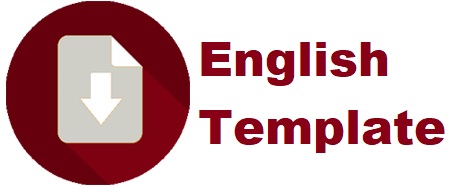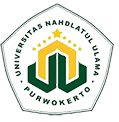Author Guideline
Author Guidelines
Submissions
We request you to submit your manuscript here by previously making a new user account. All submissions must be in Word (docx, doc format) or PDF format. Your manuscript should contain 3500 to 5000 words.
Terms of Submission
Papers must be submitted with the understanding that they have not been published by other publishing organizations and are not currently under consideration by another journal, or any other publishers.
The submitting author is responsible for ensuring that the article’s publication, it has to be approved by all the other co-authors.
We require that our authors reveal any possible conflict of interest in their submitted manuscripts. If there is no conflict of interest, authors should state that “The author(s) declare(s) that there is no conflict of interest regarding the publication of this paper.
Peer Review Processing
All the articles submitted will undergo a double-blind peer-review process to meet international standards. The editor handles the complete editorial process of the articles and peer reviewers remain anonymous to the authors. Editor decisions are strictly followed for quality publications.
Manuscript Format
The manuscript should be uploaded to Esochum: Economics, Social, and Humanities Journal system and arranged in a standard format, Title, Authors, Address and Email, Abstract in English and Bahasa, Keywords, Introduction, Materials and Methods, Result and Discussion, Conclusion, Acknowledgment, and References. Typed at one side of white paper of A4 size, in a single column, 1.5 space line, 12 point times new roman. Margins on all four sides are 3 cm.
Manuscript Title
The title is written in capital letters. The title of the paper should be concise and informative. Avoid abbreviations and formulas where possible. It should be written clearly and concisely describing the contents of the search.
Authors
The manuscript has the main author and co-authors with the full name of the author and co-authors (no abbreviation), includes affiliations address (es) and email addresses clearly.
Abstract
The abstract comes after the title page in the manuscript. Abstracts are written in Indonesian (Bahasa) and English. The abstract must be integrated and independent consisted of introduction and purpose, methods, results, conclusion, and suggestion. However, the abstract should be written as a single paragraph without these headers. For this reason, References should be avoided. Also, non-standard or uncommon abbreviations should be avoided, but if essential they must be defined at their first mention in the abstract itself. The abstract must be written using 150 to 200 words that have no reference and accompanied keywords.
Keywords
The keywords should be avoiding general and plural terms and multiple concepts. Do not use words or terms in the title as keywords. These keywords will be used for indexing purposes. Keywords of at least 3 words and not more than 5 words or phrases in alphabetical order.
Introduction
State the objectives of the work and provide an adequate background, avoiding a detailed literature survey or a summary of the results. Explain how you addressed the problem and clearly state the aims of your study. As you compose the introduction, think of readers who are not experts in this field.
Methods
It should mention the time and place of research in the first part. All materials and methods that used such chemicals for analysis, treatment, and experimental design must be stated clearly and briefly. State the objectives of the work and provide an adequate background, avoiding a detailed literature survey or a summary of the results. A Theory section should extend, not repeat, the background to the article already dealt with in the Introduction and lays the foundation for further work. a Calculation section represents a practical development from a theoretical basis.
Results and Discussion
The result and discussion must be written in the same part. They should be presented continuously start from the main result to the supporting results and equipped with a discussion. The unit of measurement used should follow the prevailing international system. All figures and tables must be clear and of high quality, placed separately at the end of the manuscript page, and must be active and editable by the editor.
Conclusion
The conclusion should be explained clearly. Suggestion placed after conclusion contains a recommendation on the research done or an input that can be used directly by users or the public.
Acknowledgment
State the grant source and the person to whom the grant was given. Name the person to help you work.
References
References provide the information necessary for readers to identify and retrieve each work cited in the text.
Check each reference carefully against the original publication to ensure the information is accurate and complete. Accurately prepared references help establish your credibility as a careful researcher and writer.
Consistency in reference formatting allows readers to focus on the content of your reference list, discerning both the types of works you consulted and the important reference elements (who, when, what, and where) with ease. When you present each reference in a consistent fashion, readers do not need to spend time determining how you organized the information. And when searching the literature yourself, you also save time and effort when reading reference lists in the works of others that are written in APA Style.
References of your manuscript must be up to date (in the last of 5 to 10 years and a minimum of 20 references that 80% of the references is from journal) and your reference can be accessed by anyone. The reference of your manuscript is organized alphabetically. Here is an example of reference format with APA.
Arikunto, Suharsimi. 2010. Prosedur Penelitian Suatu Pendekatan Praktek. Jakarta: Rineka Cipta.
Džanić, Nihada Delibegović., & Pejić, Alisa. 2006. The effect of using songs on young learners and their motivation for learning English. NETSOL Journal, Volume 1, Issue 2: 40-54.
Tsai, Yu-hsin., & Lin, Li-yun. 2001. Using music to teach grammar. Proceeding of JALT, 371-378. Retrieved from http://jalt-publications.org/archive/proceedings/2001/371.pdf
Uchiyama, Kent. 2006. English Verb Tenses: An Informal Reference for ESL Students, the Good Folks Who Teach Them, and the Idly Curious. Accessed on 16th May 2019. https://kenanaonline.com/files/0064/64047/english-verbtenses-englize.com.pdf




 Universitas Nahdlatul Ulama Purwokerto
Universitas Nahdlatul Ulama Purwokerto